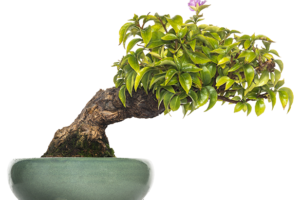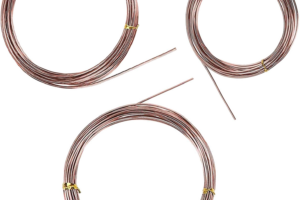
Bonsai potting
Bonsai potting is an important aspect of bonsai care that is often overlooked by beginners. Potting bonsai trees can seem like a simple task, but several factors need to be considered to ensure the tree’s health and growth. In this post, we will go over the basics of bonsai potting, including the type of pot, the soil mix, and the timing of potting.
Type of Pot:
The type of pot you choose for your bonsai tree is important for its health and growth. Bonsai pots come in a variety of sizes, shapes, and materials, including plastic, ceramic, and unglazed clay. It is important to choose a pot that is the appropriate size for your bonsai tree and that has adequate drainage holes to prevent root rot.
Soil Mix:
The soil mix you use for bonsai potting is also important for the tree’s health and growth. Bonsai soil is specifically designed for bonsai trees and contains a mixture of materials, including Akadama, pumice, and organic matter, that provide the tree with the necessary nutrients and drainage it needs to thrive.
Timing of Potting:
The timing of potting is also an important factor in bonsai care. Bonsai trees should be repotted every 2-3 years, depending on their species and growth rate. Repotting should be done in the spring, just before the tree begins to grow, to prevent root damage and to ensure optimal health and growth.
Potting Procedure:
The potting procedure for bonsai trees is as follows:
Remove the tree from its current pot and gently shake off any loose soil.
Trim the roots of the tree, removing any damaged or diseased roots, and prune the roots to fit the new pot.
Place a layer of bonsai soil mix in the bottom of the pot and place the tree in the pot, making sure the root ball is centered.
Fill the pot with bonsai soil mix, tamping it down gently to remove any air pockets.
Water the tree thoroughly to settle the soil and prevent root damage.
Place the tree in a shaded location for several days to allow the roots to recover from the transplant shock.
Conclusion:
Bonsai potting is an important aspect of bonsai care that is often overlooked by beginners. The type of pot, soil mix, and timing of potting are all important factors to consider when potting bonsai trees. By following the proper potting procedure, you can ensure the health and growth of your bonsai tree, and enjoy its beauty for many years to come. Whether you are new to bonsai or are an experienced grower, remember that with proper care, a bonsai tree can be a truly special and unique addition to your home.







Leave a Reply
Your email is safe with us.
You must be logged in to post a comment.